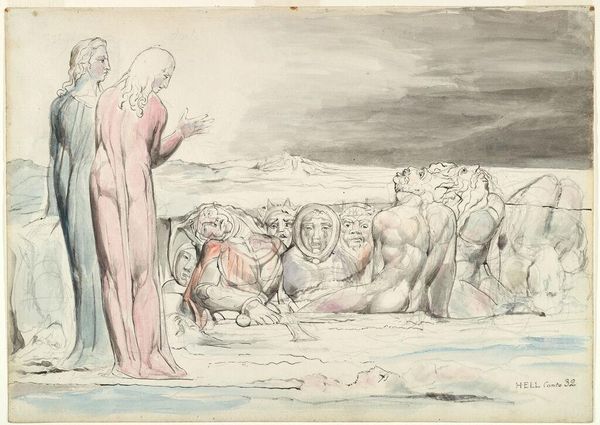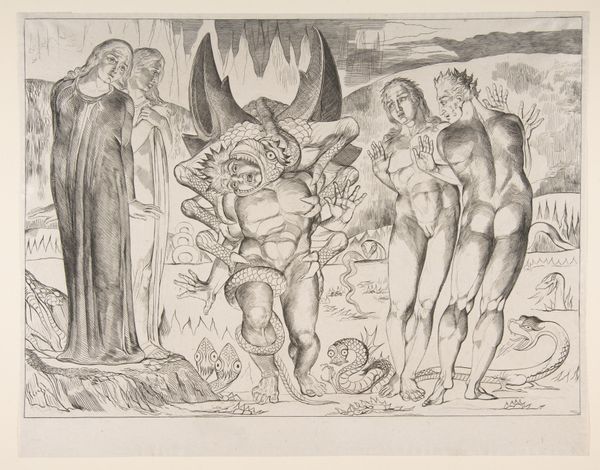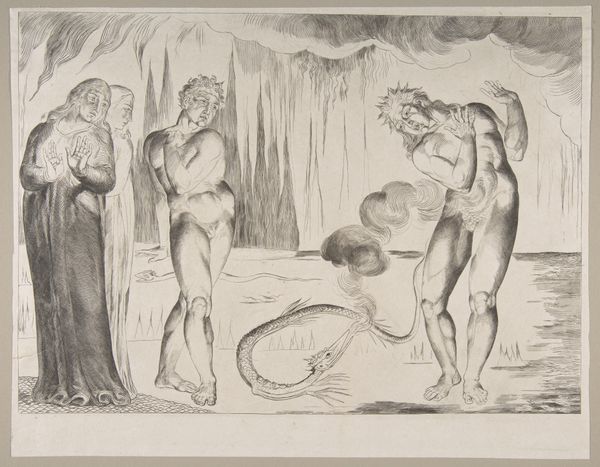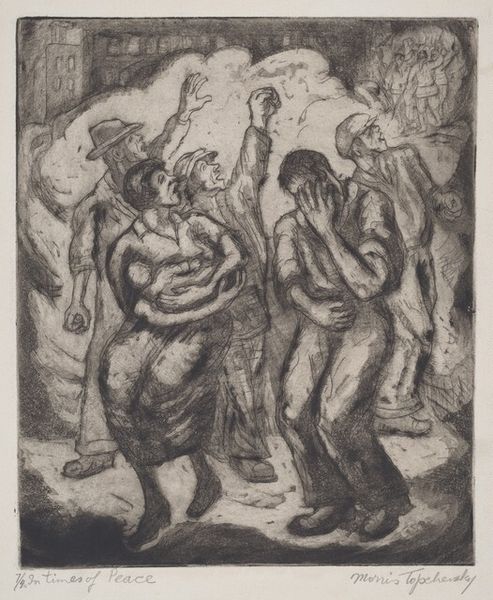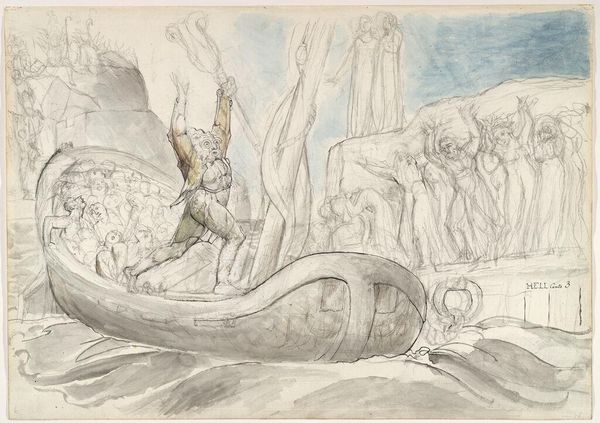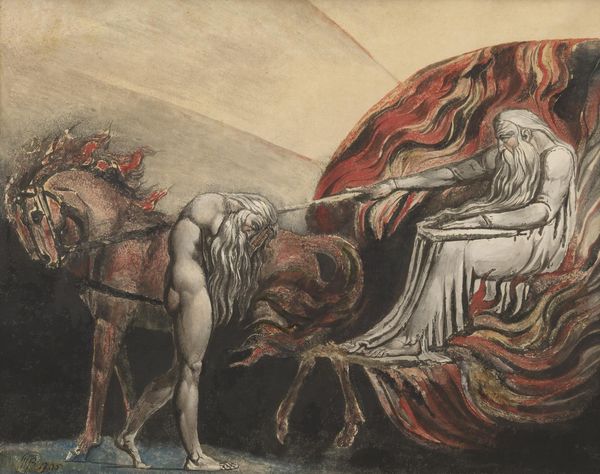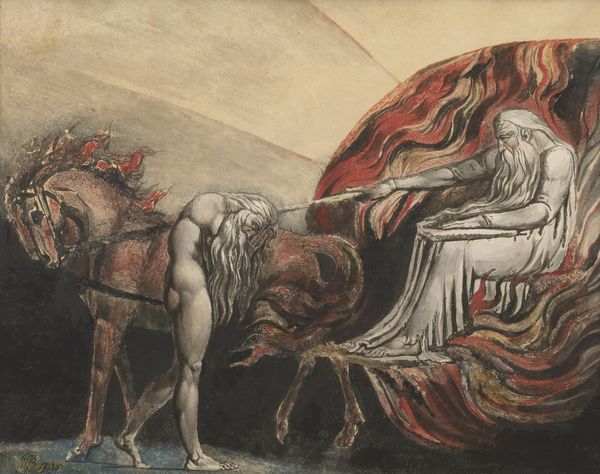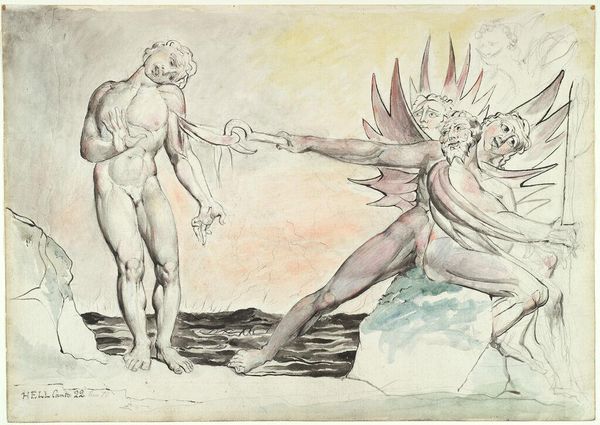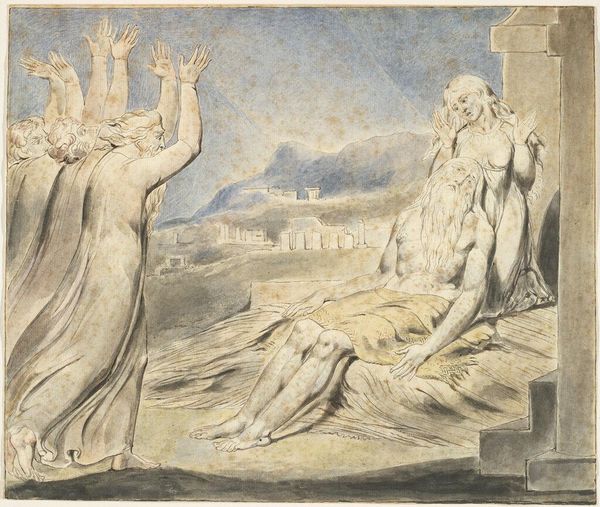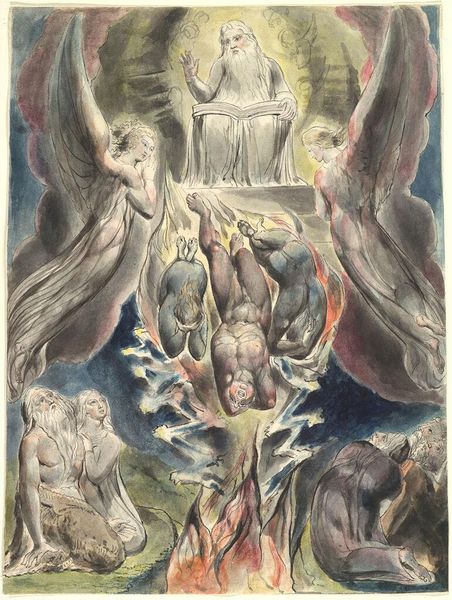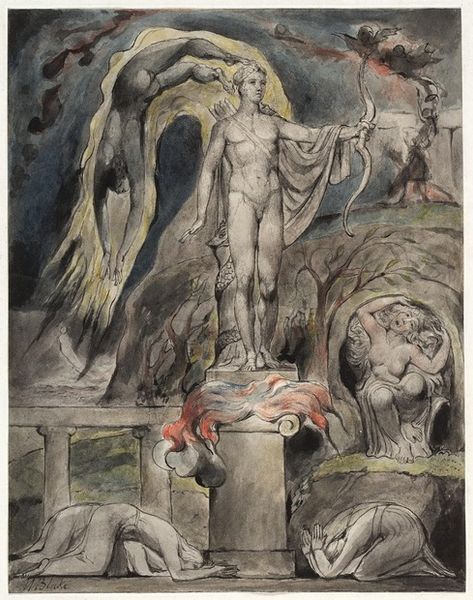
Dante and Virgil Among the Blasphemers (from Dante's "Divine Comedy") 1824 - 1827
0:00
0:00
Dimensions: 37 Ã 52.3 cm (14 9/16 Ã 20 9/16 in.)
Copyright: CC0 1.0
Editor: This is William Blake's "Dante and Virgil Among the Blasphemers," inspired by Dante's "Divine Comedy." I find the figures so expressive, writhing in agony. What symbols or deeper meanings do you see embedded in this piece? Curator: Blake uses familiar figures to explore profound psychological states. Note the contorted bodies, their gestures of despair, mirroring a spiritual torment. The classical allusions are not merely illustrative, but function as a lens through which Blake examines universal human experiences. What resonates with you most? Editor: The raw emotion, definitely. The way Blake uses the figures to convey such intense suffering is powerful. Curator: Indeed. Blake used these archetypes to explore the consequences of rejecting divine order, depicting their inner turmoil through their physical forms. Do you now see how his imagery evokes cultural memory of punishment and redemption? Editor: Yes, I see it now. It's a powerful commentary on human nature, using classical imagery.
Comments
No comments
Be the first to comment and join the conversation on the ultimate creative platform.

